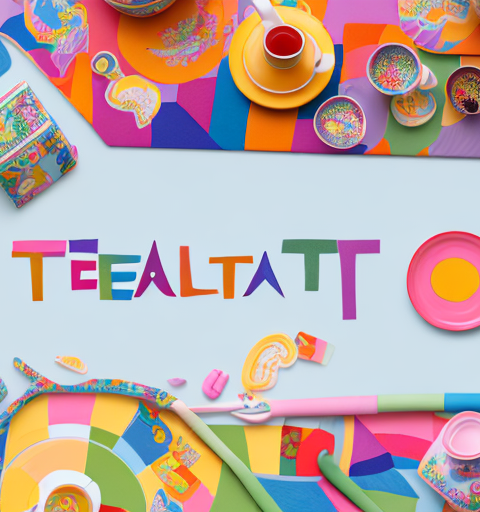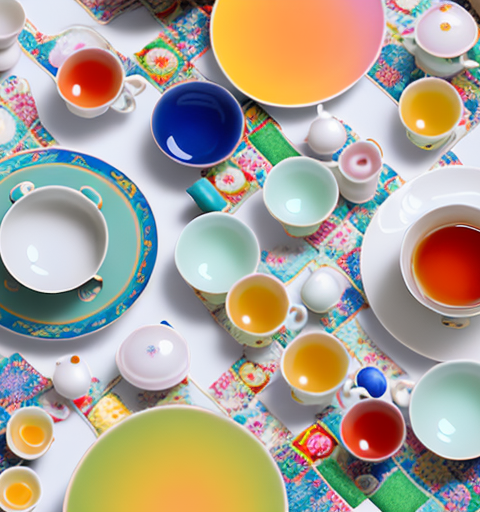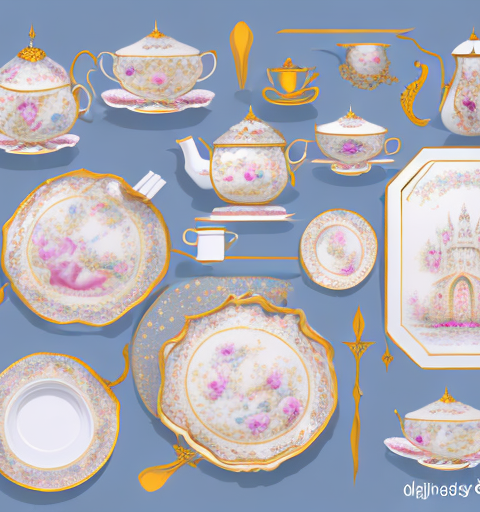Understanding the Gongfu Style of Tea Brewing
The Gongfu style of tea brewing originated in China and is known for its meticulous attention to detail and reverence for the tea leaves. This brewing method involves using a small teapot, typically made of clay, to steep the tea leaves multiple times, extracting their full flavor and aroma. The name Gongfu, which translates to “skillful” or “with great effort,” reflects the careful and precise nature of this brewing technique.
One key aspect of the Gongfu style of tea brewing is the use of high-quality tea leaves. The tea leaves used in Gongfu brewing are often whole leaves or large leaf fragments, as opposed to the smaller broken leaves used in other brewing methods. This allows for a more nuanced and complex flavor profile to develop during the steeping process.
Another important element of Gongfu brewing is the control of water temperature and steeping time. Different types of tea require specific water temperatures and steeping times to bring out their best flavors. Gongfu brewers pay close attention to these variables, adjusting them accordingly to ensure optimal results. This level of precision and customization is what sets Gongfu brewing apart from other tea brewing techniques.
The Benefits of Gongfu Style Tea Brewing
Gongfu style tea brewing offers several benefits that enthusiasts appreciate. Firstly, it allows for a more concentrated and flavorful cup of tea. By steeping the leaves multiple times in quick successions, the brewing process extracts the full essence of the tea leaves, resulting in a rich and robust infusion. Additionally, this brewing style allows for a greater exploration of the nuances and complexities of different tea varieties, enhancing the overall tea-drinking experience.
Furthermore, the Gongfu style of tea brewing promotes mindfulness and a sense of ritual. The careful attention to each step of the brewing process encourages tea enthusiasts to slow down, appreciate the beauty of the tea leaves, and savor each sip. This meditative approach can enhance relaxation and help create a moment of tranquility in our busy lives.
Another benefit of Gongfu style tea brewing is the control it gives the brewer over the strength and flavor of the tea. With this method, the brewer can adjust the steeping time and water temperature to achieve the desired taste. This level of customization allows tea enthusiasts to tailor their tea-drinking experience to their preferences, ensuring a satisfying cup of tea every time.
In addition, Gongfu style tea brewing can be a social activity that brings people together. The process of preparing and serving tea in this style often involves sharing the experience with others. It can be a way to connect with friends, family, or fellow tea lovers, creating a sense of community and fostering meaningful conversations. The act of pouring and serving tea in small cups also adds an element of elegance and hospitality to the gathering.
Exploring Different Tea Brewing Techniques
Gongfu style tea brewing is just one of the many techniques available to tea lovers. Other popular methods include Western-style brewing, where larger teapots and longer steeping times are employed, as well as the Japanese tea ceremony, which emphasizes grace and simplicity. Each technique offers a unique experience and allows for the discovery of different flavor profiles and aromas in the tea.
In addition to Gongfu style, Western-style, and the Japanese tea ceremony, there are several other tea brewing techniques worth exploring. One such technique is the Indian method of brewing tea, known as Chai. Chai is made by simmering tea leaves with a mixture of milk, water, and spices such as cardamom, cinnamon, and ginger. This results in a rich and flavorful tea that is often enjoyed with a touch of sweetness. Another technique is the Moroccan style of brewing tea, which involves steeping green tea leaves with fresh mint leaves and sugar. The resulting tea is refreshing and aromatic, with a hint of sweetness from the sugar. These different brewing techniques offer a wide range of flavors and aromas, allowing tea enthusiasts to further expand their tea tasting experiences.
Choosing the Right Teapot for Gongfu Style Brewing
Selecting the appropriate teapot for Gongfu style brewing is crucial to achieving the desired results. While clay teapots are traditionally favored for this brewing technique, ceramic teapots can also be used effectively. Ceramic teapots have the advantage of versatility, as they are suitable for various tea types and do not retain flavors, allowing for a clean and pure tea experience.
Another important factor to consider when choosing a teapot for Gongfu style brewing is the size. The size of the teapot should be proportional to the amount of tea leaves used and the number of people being served. A smaller teapot is ideal for brewing smaller quantities of tea, while a larger teapot is more suitable for brewing larger quantities or serving a larger group of people. It is important to find a teapot that allows the tea leaves to fully expand and release their flavors, while also ensuring that the tea does not become overbrewed or diluted.
Evaluating the Suitability of Ceramic Teapots for Gongfu Style Brewing
Ceramic teapots are a popular choice among tea enthusiasts, but their suitability for Gongfu style brewing may depend on specific factors. Firstly, the size of the teapot plays a crucial role in this brewing technique. Ideally, a smaller-sized teapot is preferred to maintain the high leaf-to-water ratio needed for concentrated infusions. Additionally, the thickness of the ceramic material can affect the heat retention, which is essential for maintaining the optimum temperature during multiple steepings.
Another important factor to consider when evaluating the suitability of ceramic teapots for Gongfu style brewing is the type of clay used in their construction. Different types of clay can have varying effects on the flavor and aroma of the brewed tea. For example, Yixing clay teapots are highly regarded for their ability to enhance the natural flavors of the tea over time. On the other hand, porcelain teapots are known for their neutrality, allowing the true characteristics of the tea to shine through. Therefore, tea enthusiasts may choose ceramic teapots based on their preferred clay type and the desired flavor profile of the brewed tea.
The Advantages and Disadvantages of Using a Ceramic Teapot for Gongfu Style Tea Brewing
Using a ceramic teapot for Gongfu style tea brewing has its advantages and disadvantages. On the positive side, ceramic teapots are durable, easy to clean, and their neutral material does not interfere with the tea’s flavor. They also come in a variety of designs and styles, allowing individuals to choose according to their aesthetic preferences.
However, ceramic teapots have limitations. Compared to clay teapots, ceramics may not retain heat as well, which could affect the brewing process and temperature control. Clay teapots, on the other hand, have natural properties that can enhance the tea’s flavor and aroma over time.
Another advantage of using a ceramic teapot for Gongfu style tea brewing is its versatility. Ceramic teapots can be used for various types of tea, including black, green, oolong, and herbal teas. This makes them a practical choice for tea enthusiasts who enjoy experimenting with different tea varieties.
On the downside, ceramic teapots can be more prone to breakage compared to other materials. While they are generally durable, accidental drops or mishandling can result in cracks or chips. It is important to handle ceramic teapots with care to ensure their longevity.
How to Prepare Your Ceramic Teapot for Gongfu Style Brewing
Before using your ceramic teapot for Gongfu style brewing, it is important to season it properly. Seasoning involves removing any residual odors or flavors that may be present in the teapot. To do this, rinse the teapot with boiling water a few times, ensuring all surfaces are thoroughly washed. This process helps to eliminate any unwanted smells or tastes and prepares the teapot for optimal tea brewing.
Additionally, it is recommended to let the teapot air dry completely after rinsing. This helps to prevent any moisture from lingering in the teapot, which can lead to mold or mildew growth. Once the teapot is dry, it is ready to be used for Gongfu style brewing. Remember to handle the teapot with care, as ceramic can be fragile. Enjoy the rich flavors and aromas that Gongfu style brewing brings to your tea experience!
Step-by-Step Guide to Brewing Tea in a Ceramic Teapot using the Gongfu Style
1. Preheat the teapot: Begin by pouring hot water into the teapot and then pouring it out. This step warms up the teapot and helps maintain the desired brewing temperature.2. Measure the tea leaves: Use a tea scale or teaspoon to measure the desired amount of tea leaves. The appropriate tea to water ratio varies depending on the tea type and personal preference.3. Rinse the leaves: Pour hot water over the tea leaves in the teapot, allowing them to steep for a few seconds. This quick rinse removes any dust or residue from the leaves and prepares them for the subsequent infusions.4. First infusion: Fill the teapot with hot water and steep the tea leaves for a short period, typically around 10-20 seconds. The first infusion awakens the leaves and begins to release their flavors.5. Subsequent infusions: Pour out the first infusion into a tea pitcher or directly into teacups. Refill the teapot with hot water and steep the tea leaves for a slightly longer time with each subsequent infusion, gradually increasing the steeping time to fully extract the tea’s flavors.6. Enjoy your tea: Pour the brewed tea into teacups and savor the aroma and taste. Gongfu style brewing allows for multiple infusions, so continue enjoying subsequent brews until the flavors are fully extracted.
7. Clean and dry the teapot: After finishing your tea session, clean the teapot thoroughly with warm water. Avoid using soap or detergent, as it can leave residue that affects the taste of future brews. Gently dry the teapot with a soft cloth or let it air dry completely before storing it.
Tips and Tricks for Achieving the Perfect Brew with a Ceramic Teapot in Gongfu Style
– Use fresh, high-quality tea leaves for the best flavor experience.- Experiment with different steeping times and water temperatures to find the perfect balance for each tea variety.- Pay attention to the water quality, using filtered or spring water for a clean and pure taste.- As teas differ in leaf size and density, consider adjusting the amount of tea leaves used accordingly.- Remember to pour out all the brewed tea from the teapot after each infusion to prevent over-extraction.- Embrace the joy of tea brewing by engaging all your senses – observe the tea leaves, inhale the aromas, and savor the flavors.
– When using a ceramic teapot in Gongfu style, it is important to preheat the teapot by rinsing it with hot water. This helps to maintain the optimal brewing temperature and ensures that the tea leaves steep evenly.
Understanding the Impact of Different Materials on Tea Flavor in Gongfu Style Brewing
The choice of teapot material can influence the overall flavor profile of the tea. Ceramic teapots, being neutral, do not alter the tea’s taste significantly. However, other materials like clay can absorb the flavors of the tea over time, adding a unique character to the brew. Exploring various teapot materials adds depth and complexity to the tea-drinking experience and allows for a deeper understanding of how materials interact with the tea leaves.
Another material commonly used in Gongfu style brewing is glass. Glass teapots provide a visually appealing way to observe the color and clarity of the tea liquor. Unlike ceramic or clay, glass does not absorb any flavors, allowing the true taste of the tea to shine through. This makes glass teapots ideal for delicate teas, such as green or white teas, where the subtle nuances of the tea can be fully appreciated. Additionally, glass teapots are easy to clean and do not retain any residual flavors, making them versatile for brewing different types of teas.
Exploring Alternative Teaware Options for Gongfu Style Tea Brewing
While ceramic teapots are a popular choice, there are other teaware options suitable for Gongfu style tea brewing. These include glass teapots, which offer visual appeal and allow for the appreciation of the tea leaves as they steep, as well as traditional clay Yixing teapots, known for their ability to enhance the flavors of certain tea types. Ultimately, the choice of teaware depends on personal preferences and the desired tea-drinking experience.
Another alternative teaware option for Gongfu style tea brewing is the gaiwan. A gaiwan is a traditional Chinese teapot consisting of a lid, a bowl, and a saucer. It is often made of porcelain and is known for its versatility in brewing different types of tea. The lid can be used to strain the tea leaves, while the bowl allows for easy pouring and sipping. The gaiwan is favored by tea connoisseurs for its ability to bring out the delicate flavors and aromas of high-quality teas.
In addition to teapots and gaiwans, some tea enthusiasts also opt for brewing Gongfu style tea using a tea tray. A tea tray is a flat surface with a built-in drainage system that collects the excess water and tea spills during the brewing process. It provides a convenient and mess-free way to brew and serve tea. Tea trays are often made of bamboo or wood and can be a stylish addition to a tea brewing setup. They are particularly popular for larger tea gatherings or when brewing multiple infusions of tea.






